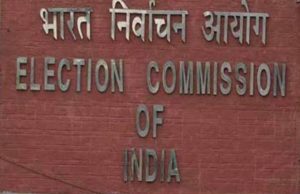
04-11-2016 (Important News Clippings)
To Download Click Here
There is no silver bullet to fight air pollution

Firecrackers burst during Diwali tipped the scale. Yet, the focus of the pre-Diwali anti-pollution drive was solely on firecrackers. This approach has to change. Pollution is not a single-source problem. Nor is the contribution of each source to pollution the same through the year. Institutionalising seasonal and regular pollution apportionment studies, conducted by qualified institutions, should become a priority. More data will enable designing better solutions and result in innovation and policies that would minimise the production of pollutants. Improving air quality cannot be the responsibility of any single government or authority, nor can efforts to address air pollution be limited to one geographical or administrative jurisdiction.The central government together with states, local authorities and all relevant agencies have to work together. The citizenry must mobilise itself to spot and check the burning of trash, for example. Improving air quality cannot be a sporadic activity, triggered by a spike in the level of pollutants. Combating pollution calls for continuous effort, backed with strong environment regulation and adoption of practices that curb pollution at source. Conscious citizen action is a must.
राज्यस्तरीय कारोबारी सुगमता
औद्योगिक नीति एवं संवद्र्घन विभाग (डीआईपीपी) ने देश में कारोबारी सुगमता की जो आंतरिक रैंकिंग तैयार की है वह बहुत अच्छे समय पर सामने आई है। गत सप्ताह ही विश्व बैंक ने भारत को 190 देशों की कारोबारी सुगमता सूची में 130वें स्थान पर रखा था। यानी पिछली रैंकिंग में केवल एक स्थान का सुधार। यह केंद्र सरकार के लिए खासी निराश करने वाली बात थी। परंतु राज्यवार सूची जिसे कारोबारी सुधार कार्य योजना का नाम दिया गया है और जिसे अंतरराष्ट्रीय रैंकिंग सिस्टम के आधार पर ही तैयार किया गया है, वह दिखाती है कि कई राज्यों ने जुलाई 2015 से जून 2016 के बीच उल्लेखनीय सुधार किया है।
मतदाता का हक
चुनावों में अगर किसी व्यक्ति ने अपनी शैक्षणिक योग्यता के बारे में कोई गलत जानकारी दी है तो उसकी उम्मीदवारी रद्द हो सकती है।

अब तक उम्मीदवारों की शैक्षणिक योग्यता जैसे मामलों पर सवाल उठाने वाले आमतौर पर प्रतिद्वंद्वी उम्मीदवार ही होते थे। इस लिहाज से देखें तो अदालत के ताजा फैसले का एक अहम पहलू यह है कि उसने उम्मीदवारों की शैक्षणिक योग्यता की जानकारी मांगने को मतदाताओं के मौलिक अधिकार के रूप में दर्ज किया है। यानी अगर कोई मतदाता उम्मीदवार की डिग्रियों के बारे में सूचना चाहता है तो उसे मुहैया कराना उम्मीदवार के लिए कानूनी बाध्यता होगी। ऐसे मामले अक्सर सामने आते रहे हैं जिसमें किसी व्यक्ति ने विधायिका में अपनी उम्मीदवारी के लिए आवेदन भरते हुए शैक्षणिक योग्यता के बारे में गलत सूचना दर्ज कर दी। ऐसी सूचना की तत्काल पुष्टि हो सके, इसकी व्यवस्था अब तक कमजोर रही है। इसलिए ऐसे लोग नामांकन, मतदान, चुनाव और जीत की प्रक्रिया को पार कर विधायिका का हिस्सा भी बन जाते हैं। मुश्किल तब सामने खड़ी होती है जब किसी तरह का शक होने पर विपक्ष से या कोई और उम्मीदवार जीत गए व्यक्ति की ओर से दी गई सूचना पर सवाल उठा देता है।कुछ समय पहले दिल्ली में आम आदमी पार्टी की सरकार में कानून मंत्री रहे जितेंद्र तोमर की स्नातक और कानून की डिग्रियों को लेकर विवाद खड़ा हुआ, तब स्वाभाविक ही यह सवाल उठा कि जो व्यक्ति गलत सूचना के आधार पर विधायक बन जाता है, वह एक स्वच्छ और ईमानदार शासन की कसौटी पर कितना खरा उतर सकेगा! इसके अलावा, हाल में मौजूदा केंद्र सरकार में मानव संसाधन विकास मंत्री रहीं और अब कपड़ा मंत्री स्मृति ईरानी की ओर से भी अपनी डिग्रियों के बारे में गलत सूचना देने पर सवाल उठाते हुए अदालत में मामला पहुंचा था। शिकायत में आरोप लगाया गया था कि उन्होंने विभिन्न चुनाव लड़ने के लिए चुनाव आयोग में दाखिल हलफनामों में अपनी शैक्षणिक योग्यता के बारे में गलत सूचनाएं दीं।
हालांकि दिल्ली की पटियाला हाउस कोर्ट ने देरी को आधार बना कर यह मामला खारिज कर दिया, लेकिन डिग्री के बारे में गलत जानकारी का सवाल बना रहा। इस लिहाज से देखें तो सुप्रीम कोर्ट ने अपने ताजा फैसले में इस मसले पर बनी धुंध साफ कर दी है। यों भी, कोई नागरिक चुनावों के दौरान उम्मीदवारों से ईमानदार होने के साथ-साथ अपने बारे में सही जानकारी सामने रखने की अपेक्षा करेगा। लेकिन अगर ऐसा नहीं होता है तो इससे न सिर्फ उस खास उम्मीदवार के प्रति भरोसा टूटता है, बल्कि इससे लोकतांत्रिक मूल्यों पर भी चोट पहुंचती है।
On parallel tracks
A Supreme Court judgment poses an old question to India’s labour movement: how to unionise contract workers

No change
It would therefore be natural to hope that the SC verdict would have an immediate, and positive, bearing on contract workers’ compensation. Unfortunately, this is unlikely to happen, due to the third difference between permanent and contract workers: access to collective bargaining.As per the Trade Unions Act, 1926, any workman who works in a factory can join a union of that factory. But trade unions typically have only permanent workers as members. The reason cited is that contract workers are not employees of the employer in question (the manufacturing unit), and so should not find representation in a union body formed for the purpose of negotiating with the said employer. Contract workers are hired by the labour contractor, who is empanelled with the employer as a supplier of contract labour, and who pays their salaries.
But not being on the rolls of an employer does not disqualify a contract worker from being a member of a factory’s union. Labour law experts point to section 2 (g) of the Trade Union Act, which defines “workmen”, for the purposes of a trade union, as “all persons employed in trade or industry whether or not in the employment of the employer with whom the trade dispute arises”.This question of who can become a member of a trade union also came up recently in the case of Chander Bhan, etc versus Sunbeam Autoworkers Union in the Gurgaon District Court. In a judgment that went largely unnoticed, the court ruled that any workman employed by a factory — irrespective of whether he was a permanent worker or not, fulfilled the Industrial Dispute (ID) Act’s definition of workman or not — was eligible to participate in union activities.
In the Gurgaon industrial belt, Sunbeam Autoworkers Union is probably the only union that gives membership to workers with less than 240 days’ service, and it needed a court intervention to be able to do so. But even it does not offer membership to contract workers. In fact, no union anywhere gives membership and voting rights to contract workers. The reasons are many. First, in an industrial climate extremely hostile to any union activity, workers believe that forming a union that also includes contract workers is bound to provoke the management into even greater hostility. Second, managements refuse point blank to discuss with unionists any issues concerning contract workers. Third, contract workers are far more insecure compared to regular workers. In an era where companies frequently terminate even a permanent worker for engaging in union mobilisation, the stakes are too high for contract workers, who could be summarily dismissed, without any consequences, by the management.Fourth, and this is an unpalatable truth for most trade unionists, permanent workers themselves don’t want to extend union membership to contract workers. In a factory, say, that employs 300 permanent workers and 1,200 contract workers, any union that gives voting rights to contract workers would instantly marginalise permanent workers. Given that permanent workers’ salaries are much higher, economic self-interest militates against the inclusion of contract workers in union membership.As a result, India’s contract workers, with the exception of some PSUs in select sectors such as steel and coal, remain both heavily exploited and largely un-unionised, with the lack of unionisation and exploitation reinforcing each other.
Ironically, it was the Contract Labour (Regulation and Abolition) Act, 1970 (CL Act), ostensibly enacted to abolish contract labour, that cemented their exploitation by offering a legal operating framework to labour contractors. Before this legislation, temporary workers and permanent workers could make claims on their employer and negotiate as members of the same union. But the CL Act, by introducing a distinction between an ‘employer’ and a ‘principal employer’, kept the door open for expansion of contractualisation.
Getting around the law
Contract labour was initially employed only for non-core work such as gardening, cleaning, and maintenance. Soon, they began to be increasingly employed in production as well. Workers protested. In response, the CL Act was enacted. It expressly prohibits the employment of contract labour for perennial work, that is, in core production.But labour contractors easily circumvent this requirement through what have come to be known as ‘sham contracts’. It is a contract that may show a worker as having been hired for a cleaning job. But once he enters the factory premises, he is engaged in production work. There is no documentation to show that a contract worker who, on paper, is engaged for cleaning work, is actually in production.The SC judgment thus poses an old question to India’s labour movement: how to unionise contract workers, who are in one factory today, in another the next, and whose interests are all too easily played off against those of permanent workers? Unless the labour movement comes up with an answer to this question, legislations and judicial pronouncements may not change things much on the ground.
G. SAMPATH sampath.g@thehindu.co.in
Date: 03-11-16
Green farms and clean air
The massive pollution cloud enveloping northern India every year is a good example of the disconnect between official policy and ground realities. It has been known for long that burning of agricultural waste in the northern States significantly contributes to the poor air quality in large parts of the Indo-Gangetic Basin, with local and cascading impacts felt from Punjab all the way to West Bengal. Harmful fine particulate matter measuring 2.5 mm in diameter (PM2.5) is among the pollutants released. Punjab responded to the issue with a prohibition on the burning of paddy straw, and the launch of initiatives aimed at better utilisation of biomass, including as a fuel to produce power. Yet, there is no mission mode approach to the annual crisis. The efforts do not match the scale of agricultural residues produced, for one, and fail to address farmers’ anxiety to remove the surplus from the fields quickly to make way for the next crop. The national production of crop waste is of the order of 500 million tonnes a year, with Uttar Pradesh, Punjab and West Bengal topping the list. Again, 80 per cent of straw from paddy is burnt in some States, impacting air quality and depriving croplands of nutrients.
विकास भी चाहिए और रोजगार भी
पिछला एक वर्ष भारत के लिए उथल-पुथल भरा रहा है। अपनी संप्रभुता, सीमाओं की सुरक्षा के साथ-साथ राष्ट्रवाद की आक्रामक अभिव्यक्तियों से उसे जूझना पड़ा है। वहीं, इस क्षेत्र की भू-राजनीति अब भी अनिश्चित और अस्थिर बनी हुई है। चीन की विकास दर घट रही है, लिहाजा अपने आर्थिक रसूख को कायम रखने के लिए वह नए-नए तरीके अपना रहा है। दक्षिण चीन सागर विवाद पर ट्रिब्यूनल के फैसले को न मानना, ‘वन बेल्ट वन रोड’ (सिल्क रोड आर्थिक गलियारा और 21वीं सदी के समुद्री सिल्क रोड) पर तेजी से आगे बढ़ना और तिब्बत से निकलने वाली नदियों के पानी के रुख में तब्दीली से जुड़ी खबरें उसकी इन्हीं कोशिशों के चंद उदाहरण हैं।
वह पारंपरिक रूप से भारत का सहयोगी माने जाने वाले रूस के साथ भी दोस्ती की नई पींगे बढ़ा रहा है, और पाकिस्तान के साथ उसकी कदमताल जारी है ही। इससे निश्चय ही इस क्षेत्र की भू-राजनीति और जटिल बनने वाली है। उधर अमेरिकी राष्ट्रपति चुनाव के नतीजे को लेकर तस्वीर भले ही साफ दिखती हो, मगर नए अमेरिकी मुखिया के साथ चीन की विदेश नीति की दिशा क्या होगी, इस पर अब तक भ्रम की चादर पड़ी है। मगर हां, इस तस्वीर के बीच भी भारत ने कई मोर्चों पर उल्लेखनीय प्रगति की है।
हमारी पहली प्रगति विदेश नीति के मोर्चे पर हुई है। हाल के वर्षों में रणनीतिक तौर पर हम अमेरिका से इतने करीब कभी नहीं रहे, जितने अभी हैं। साथ ही, अफ्रीका, लातीन अमेरिका, ऑस्ट्रेलिया और न्यूजीलैंड तक भी हमारी पहुंच मजबूत हुई है। देश-दुनिया में मोदी के नेतृत्व को व्यापक रूप से मान्यता मिली है। दूसरी सफलता आर्थिक मोर्चे पर है। मामूली मुद्रास्फीति के साथ हमारी अर्थव्यवस्था 7.4 फीसदी की दर से कुलांचे भर रही है। चालू खाते का घाटा स्थिर है और अधिक उदार मौद्रिक नीति की ओर भी हमने कदम बढ़ाया है। विश्व में सबसे तेजी से बढ़ती अर्थव्यवस्था हमारा एक सकारात्मक पक्ष है ही।
मगर भारत में निजी निवेश की रफ्तार अब भी सुस्त है। हालांकि बैंकों के संचित कोष पर पाबंदियों को हटाकर और इन्फ्रास्ट्रक्चर में बड़े पैमाने पर निवेश करके निजी निवेश को गति देने की कोशिश की जा रही है, मगर इन कोशिशों का लाभ मिलने में वक्त लगेगा। हमने राजनीतिक मोर्चे पर भी खूब प्रगति की है। भाजपा इससे पहले इतनी मजबूत कभी नहीं रही, जितनी कि पिछले एक वर्ष में रही है। इसके खाते में कई राज्य सरकारें आई हैं और कई क्षेत्रीय पार्टियों ने भी इसका दामन थामा है। हालांकि इससे ऐतराज नहीं कि अब भी काफी कुछ उत्तर प्रदेश, पंजाब और गुजरात के विधानसभा चुनावों पर निर्भर करेगा।
इन तमाम क्षेत्रों के अलावा मैं यहां दो अन्य संदर्भों की चर्चा करना चाहूंगा, जिसमें पहला विश्व बैंक से जुड़ा है। विश्व बैंक हर वर्ष ‘ईज ऑफ डूइंग बिजनेस’ यानी कारोबारी माहौल को लेकर दुनिया के तमाम देशों की रैंकिंग जारी करता है। यह सूची एक तरह से निवेश के माहौल और संभावित विकास के अनुमान का खाका होती है। हालिया सूची में हमारी स्थिति में पिछले वर्ष के मुकाबले बहुत मामूली सुधर हुआ है और महज एक पायदान ऊपर चढ़कर हम 130वें स्थान पर पहुंचे हैं। यह मोदी सरकार के उन वादों से कोसों दूर है, जिसमें भारत को शीर्ष 50 देशों में शुमार किए जाने की बात कही गई थी।
बेशक इस सूची के गुणा-भाग के तरीके पर सवाल उठाया जा सकता है, मगर कुछ मामलों में हमारी गति वाकई निराशाजनक है। कारोबार को शुरू करने, निर्माण-कार्यों की अनुमति लेने, कर्ज मिलने और दिवालियेपन का समाधान निकालने में हम उम्मीद के मुताबिक काम नहीं कर सके हैं। जाहिर है, इस संदर्भ में छोटे से छोटे फैसले लेने और केंद्र और राज्यों के बीच नीतिगत मामलों में सामंजस्य बनाने की दरकार है। हमें अपनी गति दोगुनी करनी होगी, तभी इस सूची में हम अपना प्रदर्शन बेहतर कर सकते हैं। मेरा मानना है कि नीति आयोग के उपाध्यक्ष के नेतृत्व में नीति आयोग, औद्योगिक नीति व संवर्धन विभाग (डीआईपीपी) और वित्त मंत्रालय का एक संयुक्त कार्य समूह बनाया जा सकता है, जो इस दिशा में काम करे।
मेरा मानना है कि मोदी सरकार द्वारा उठाए गए कदमों से मिले फायदे को हमें यूं ही जाया नहीं होने देना चाहिए। दूसरा संदर्भ नई नौकरियों के सृजन से जुड़ा है। मैं हाल ही में एक टीवी-डिबेट में शामिल हुआ था, जहां सभी की यही राय थी कि अगर हर महीने दस लाख नौकरियां पैदा करनी हैं, तो हमें नई रणनीति अपनानी ही होगी। रणनीति की इसलिए भी दरकार है, क्योंकि प्रौद्योगिकी में बदलाव, डिजिटल प्लेटफॉर्म, इंटरनेट के विस्तार और चौथी औद्योगिक क्रांति की वजह से नौकरियां जितनी तेजी से खत्म हो रही हैं, उतनी तेजी से पैदा नहीं हो रहीं। विश्व बैंक का अनुमान है कि विध्वंसकारी तकनीकी बदलाव के कारण करीब 68 फीसदी भारतीयों की नौकरियां खतरे में हैं।
बेशक तकनीकी समावेशन को रोककर हम खुद को स्पर्धा से बाहर नहीं कर सकते। मगर जिन तकनीकों का चरित्र श्रमिकों का विस्थापन है, उसे लेकर नए दृष्टिकोण अपनाने की जरूरत है। चीन का उदाहरण हमारे सामने है, जहां मजदूरी की दरों में उल्लेखनीय इजाफा होने के कारण श्रम-प्रधान उद्योग विकल्प के रूप में देखे जाने लगे हैं। भारत में भी कपड़ा, रत्न व आभूषण, चमड़ा, हार्डवेयर, इलेक्ट्रॉनिक्स जैसे श्रम-प्रधान उद्योगों को लेकर काम किए जाने की जरूरत है। नीति आयोग ने कुछ कदम जरूर उठाए हैं, मगर श्रम कानूनों (जो अब राज्य के अधिकार-क्षेत्र में है), भूमि अधिग्रहण की मंजूरी और अन्य नीतिगत बदलावों पर जल्दी से जल्दी काम नहीं किया गया, तो हम यह अवसर गंवा सकते हैं।महज यह मान लेना कि हमारी पहल ही पर्याप्त नौकरियां पैदा करने के लिए काफी होगी, इस मामले को सतही तौर पर देखना होगा। स्किल इंडिया कार्यक्रम को अगर अत्याधुनिक बनाना है, तो हमें 21वीं सदी के अनुकूल शिक्षा और कौशल को बढ़ावा देना होगा। इससे जुड़े कार्यक्रमों में सुधार करने होंगे। इसके साथ, सामाजिक क्षेत्रों की नीतियों को भी इसके अनुकूल बनाना होगा। अगर हम ऐसा करने में सफल रहे, तो यकीन मानिए कि नौकरी के हिसाब से यह न सिर्फ ग्रामीण भारत के लिए, बल्कि तकनीक में बदलाव के कारण ‘बेरोजगार’ होने वाले भारत के लिए भी काफी सुखद रहेगा। यह दौर सचमुच खत्म होना चाहिए, जिसमें विकास तो हो रहा है, मगर बेरोजगारी भी है। यह तभी संभव है, जब रोजगार का लगातार सृजन हो और विकास-दर सतत गति से आगे बढ़े। जाहिर है, भारत अभी बदलाव के चौराहे पर है।
एन के सिंह, पूर्व सांसद और पूर्व केंद्रीय सचिव (ये लेखक के अपने विचार हैं)


